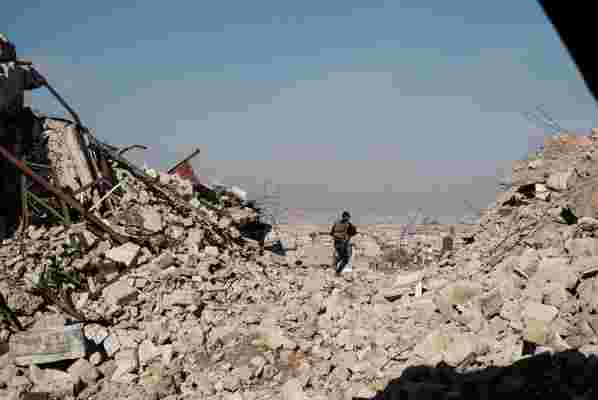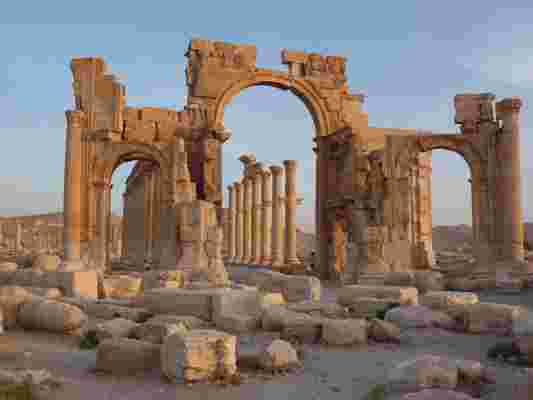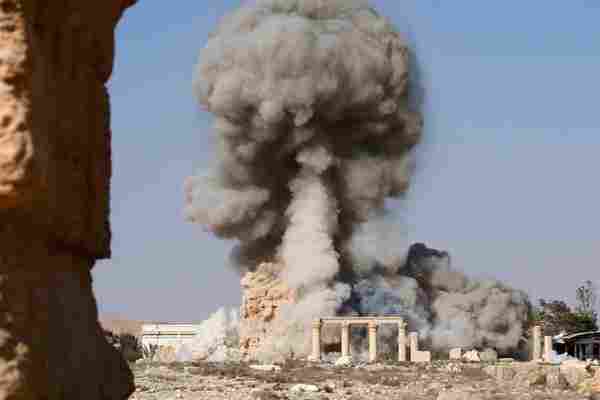Do We Need to Rebuild Historic Sites Ruined by Terrorism?
Every two years, the World Monuments Fund publishes a list of what the organization and an expert jury consider the most threatened buildings and heritage sites. Overdevelopment, coastal erosion, and the structure's age all pose a threat, but terrorist activity has steadily risen as a cause of destruction. As the organization deliberates its 2018 list and conflict continues in the Middle East, AD spoke with WMF Executive Vice President Lisa Ackerman, who foreshadowed what to expect: “the conflict in the Middle East figures prominently in this discussion.”
“Heritage sites, to a certain extent, can be repaired,” she explained, before adding, “what is harder to determine is what ‘fixing’ means.” For a site like the Tomb of Jonah, near Mosul, Iraq, it would be feasible to reconstruct that which has been destroyed by ISIS in July 2014. “In theory, with enough knowledge about the materials, dimensions, and history of the site, the remains could be reconstructed or a replica built.” The same would be true, she explained, of a site like Syria’s Shayzar Castle, which was badly damaged in the conflict, citing Rome’s Pantheon—which has been extensively modified through history—as an example of a building that has flourished because it has evolved.

In July 2014, the Tomb of Jonah was destroyed by ISIS.
Other examples are more nuanced. “When you get to buildings such as the Temple of Baal, in Palmyra, Syria,” Ackerman says, “there are equal numbers of people advocating for leaving it as a reminder of the destruction and those who wish to see it rebuilt.” Though those types of acute incidents of destruction continue (as it occurred with the Temple of Baal in August 2015), there is also the added challenge—less brazen, but no less threatening—of the administrative vacuum left by regime change. In Lybia, for example, where governance remains uncertain after the removal of Muammar Qaddafi, Cyrene (the ancient Greek colony in Libya) has become threatened not necessarily because of a risk of an act of destruction, but, rather, by a gradual and incremental encroachment of infrastructure. “Libya doesn’t make the news anymore,” said Ackerman, “but its Department of Antiquities just doesn’t exist anymore, so people have begun building roads and housing right next to the site, and once those are in place, it becomes hard to remove them again.”

Located in Palmyra, Syria, the Temple of Baal was estimated to be built in 32 A.D. The temple, which was used to worship various gods, was modified by Arabs in 1132 A.D.

The ancient temple was destroyed by ISIS in August 2015.
For WMF—and AD —this subject is not just a question of architecture. Fundamentally, it is about the intersection of architecture with people’s lives. “An archeological site can get fixed,” Ackerman reasons, “but the widespread devastation to everyday landscapes—people’s homes and businesses, or marketplaces—this is a daunting concern.” This is all the more true for historic architecture actively used in contemporary daily life. “If you lose the souk of Aleppo, you also lose the shops that were once there, the nearby businesses and homes, and, in essence, the street life that gave the area its distinction.”
“The damage is more subtle than the obvious heritage sites,” she explained, pointing out the fact that WMF placed the entire country of Iraq on the Most Watched List in 2006. The threat, as she sees it, is the loss of “buildings and sites of daily life, in combination with the named historic sites.”